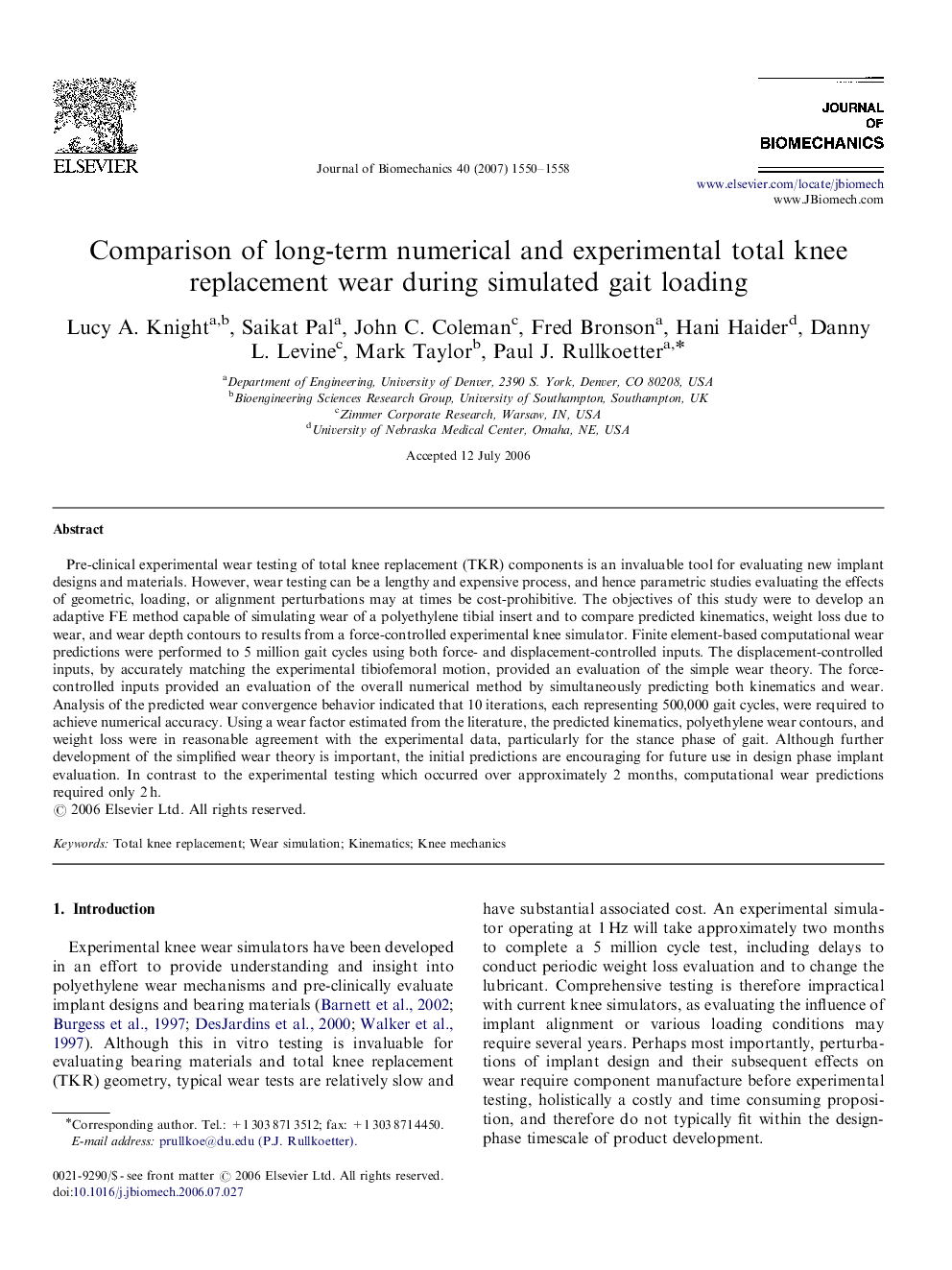| کد مقاله | کد نشریه | سال انتشار | مقاله انگلیسی | نسخه تمام متن |
|---|---|---|---|---|
| 874513 | 910340 | 2007 | 9 صفحه PDF | دانلود رایگان |

Pre-clinical experimental wear testing of total knee replacement (TKR) components is an invaluable tool for evaluating new implant designs and materials. However, wear testing can be a lengthy and expensive process, and hence parametric studies evaluating the effects of geometric, loading, or alignment perturbations may at times be cost-prohibitive. The objectives of this study were to develop an adaptive FE method capable of simulating wear of a polyethylene tibial insert and to compare predicted kinematics, weight loss due to wear, and wear depth contours to results from a force-controlled experimental knee simulator. Finite element-based computational wear predictions were performed to 5 million gait cycles using both force- and displacement-controlled inputs. The displacement-controlled inputs, by accurately matching the experimental tibiofemoral motion, provided an evaluation of the simple wear theory. The force-controlled inputs provided an evaluation of the overall numerical method by simultaneously predicting both kinematics and wear. Analysis of the predicted wear convergence behavior indicated that 10 iterations, each representing 500,000 gait cycles, were required to achieve numerical accuracy. Using a wear factor estimated from the literature, the predicted kinematics, polyethylene wear contours, and weight loss were in reasonable agreement with the experimental data, particularly for the stance phase of gait. Although further development of the simplified wear theory is important, the initial predictions are encouraging for future use in design phase implant evaluation. In contrast to the experimental testing which occurred over approximately 2 months, computational wear predictions required only 2 h.
Journal: Journal of Biomechanics - Volume 40, Issue 7, 2007, Pages 1550–1558